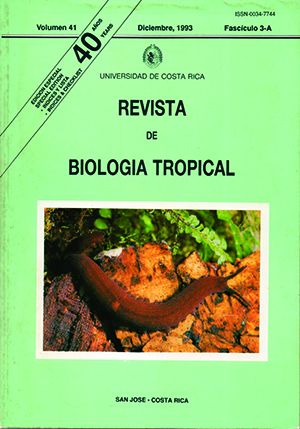Abstract
In intenidal areas,ofthe Indo-West-Pacific, foraging soldiercrabs create a disturbed sediment surface covered with pseudofaeca1 peÍlets discarded during the feeding process. To investigate the impact of feeding activities of the soldiercrab Mictyris longicarpus (Latreille, 1806) on small infauna, field experiments were carried out in a tropical tidal flat of Northeast Australia. A comparison of meiofaunal abundances in undisturbed sediment and sediment deposited by soldiercrabs after flotation feeding indicated an uptake of certain meiofauna taxa. Significantly reduced numbers of nematodes, copepods and plaLIJelminthes were found both in LIJe pseudofaeca1 pellets díscarded by crabs foraging on LIJe surface, and in LIJe sediment deposited as hummocks by subsurface feeding crabs. Ostracods and newly settled bivalve larvae were not separated during flotation feeding, but discarded wiLIJ the pellets. This indicated a soning of food items by their specific density during the flotation feeding process. A caging experiment showed signifíéant increases in the abundance of ail meíobenthic taxa when soldiercrabs were excluded. Mechanical disturbance of LIJe sediment 10 simulate sediment scraping by the crabs had no impact on the meiobenthos. Foraging soldiercrabs are important predators on meiofauna and significantly modify the meiofaunal cornmunity in tropical tidal fla##plugins.facebook.comentarios##

This work is licensed under a Creative Commons Attribution 4.0 International License.
Copyright (c) 1993 Revista de Biología Tropical
Downloads
Download data is not yet available.


